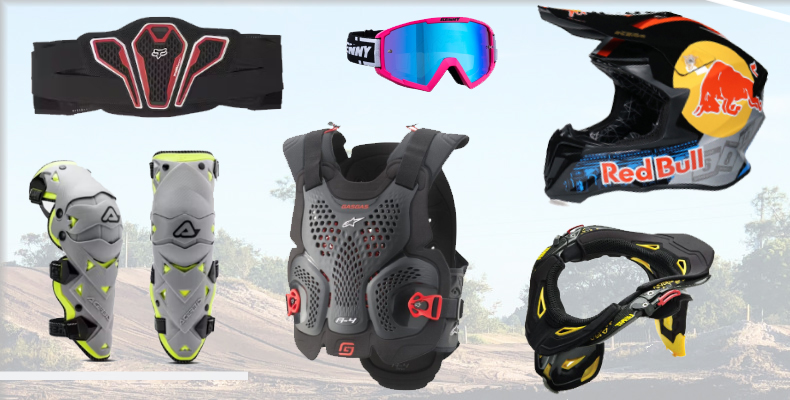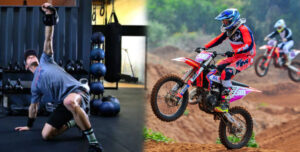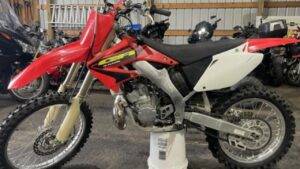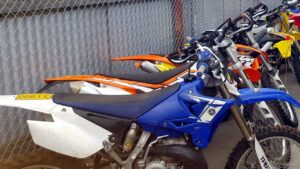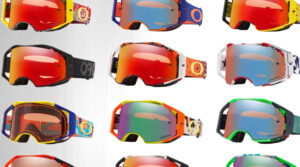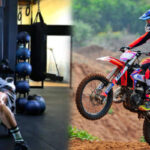Introduction
Motocross is widely recognized as one of the most dangerous sports due to the extreme speeds, aerial tricks, and rough terrain involved. Studies show motocross has an injury rate of around 94.5 per 1,000 participants, compared to just 3.85 per 1,000 for mainstream sports like basketball. Motocross riders and their dirtbikes can reach speeds of over 100 mph while soaring 30 feet into the air, which means crashes and accidents often cause blunt force trauma as well as orthopedic and soft tissue injuries. A study from Operation Motocross found 50% of motocross injuries occur in riders 16 years old or younger, highlighting the risks even for young, amateur participants.
Given the inherent dangers of motocross riding, proper protective gear is absolutely essential. A full set of quality motocross gear can be the difference between walking away from a bad crash with some bruises versus sustaining broken bones, organ damage, spinal cord injuries, or even death. The right motocross gear protects the areas most vulnerable to injury during crashes, such as the brain, chest, back, knees and shins. Riders who fail to take their protective gear seriously risk career-ending or life-altering trauma.
Helmets
Wearing a high-quality helmet designed for motocross is the most important piece of protective gear a rider can wear. According to UPMC, head injuries account for a significant portion of the more than 200,000 motocross injuries that occur each year. The right helmet can help protect you from concussions, skull fractures, and other traumatic brain injuries in the event of a crash.
There are three main types of motocross helmets to consider:
- Full face helmets provide the most coverage, with a chin bar and face shield to protect your entire head and face.
- Open face helmets offer the same top, side, and rear coverage but without the chin bar and visor. They usually have goggles instead.
- Modular or “flip-up” helmets function like a full face but allow you to flip the chin bar up when desired.
Make sure any helmet you select is DOT or SNELL certified, meeting rigorous safety standards. It should also have adequate ventilation and removable/washable lining to keep you cool and comfortable while riding.
When trying on helmets, ensure a snug and secure fit all around your head. It should not shift excessively or be painfully tight. The chin strap needs to fit snugly under your chin as well. Finding the right size and fit is crucial for safety.
Goggles
High quality goggles are essential for protecting your eyes and maintaining clear vision while riding motocross. Goggles shield your eyes from dust, dirt, mud, branches and other debris that can get kicked up on the track. They also help absorb sweat and prevent wind, dirt and roost from irritating your eyes.
When selecting motocross goggles, there are a few key features to consider:
Lenses – Look for lenses with anti-fog technology to avoid vision issues from condensation and lenses with scratch resistant coatings. Many goggles also offer interchangeable lenses so you can switch out clear, tinted or polarized lenses for different lighting conditions. (Mx-Gear.com)
Foam Padding – The foam lining around the goggles should provide a comfortable, cushioned fit while also absorbing sweat and moisture. Multi-layer foam helps prevent soggy goggles. Replaceable foam is ideal as padding can wear out over time. (Risk Racing)
Strap and Fit – Look for a wide, adjustable goggle strap that gives a secure fit over your helmet and head. The strap should be easy to tighten and loosen between motos. A strap with silicone beads helps prevent it from slipping. The goggles themselves should offer some flex and fit snugly but comfortably against your face.
Finding the Right Boots
A good pair of motocross boots are crucial pieces of gear that every rider needs. The right boots provide critical ankle support and protection during jumps and crashes on the track. According to riders on Vital MX forums, ankle injuries are very common in motocross, so quality boots go a long way in preventing breaks and sprains
When selecting motocross boots, look for a sturdy sole and ankle support system. The boots should prevent overextension and hyperextension of the ankle joint. Many top boots incorporate hinge systems or buckles across the ankle to offer maximum stability and protection. Advanced riders jumping massive distances recommend boots with integrated ankle braces for even more support.
The outsole and tread pattern are also important for maintaining traction. Deep lugs and channels in the sole improve grip and stability in different terrain conditions. Some top brands like Alpinestars and Fox now offer boots with replaceable soles so you can customize the tread pattern. Just make sure to choose an overall sole stiffness that matches your riding style – more flexible for play riding and stiffer for aggressive racing.
It’s also crucial to break in new motocross boots properly before riding in them. The stiff leather needs time to conform to your feet and ankles. Follow the boot manufacturer’s break-in guidelines, and plan for at least 2 weeks and 20 hours of moderate wear around the house. Stay away from oiling agents that can compromise the boot’s materials. The right fit should be snug with toes just brushing the end, no major pinching or pressure points on your feet.
Body Armor
Body armor is a crucial piece of motocross gear to protect your core, elbows, knees and shoulders. While you can ride without it, body armor significantly reduces the risk of painful and debilitating injuries. There are three main types of body armor to consider:
Chest protectors: These protect your ribs, chest, back and vital organs. Quality chest protectors are made of shock-absorbing materials like EVA foam and plastic plates. Some even have carbon fiber for maximum impact resistance. Studies show chest protectors reduce the risk of bruising and fractured ribs in crashes (Source). They don’t completely prevent injury, but they provide an important extra layer of protection.
Knee and elbow pads: These tough pads shield your joints during spills and help prevent painful fractures, dislocations and breaks. Look for pads with durable outer shells and EVA foam or D30 padding inside. Make sure they offer good flexibility and fit comfortably under your pants and jersey.
Ventilation: Proper airflow is key when choosing body armor. Excess heat and sweat will make you uncomfortable on longer rides. Look for strategically placed ventilation panels and mesh material in moisture prone areas. Some body armor comes with removable liner pads that can be washed after sweaty rides.
Gloves
Gloves are just as important to protect your hands and wrists from injury as any other gear. According to Dirt Bike Injuries & Statistics, wrist sprains and fractures are among the most common motocross injuries. Gloves provide grip, padding, and wrist support to help prevent these painful injuries.
Focus on gloves with good grip material on the palms and fingers. This helps maintain control of the bike. Many top gloves use Clarino synthetic leather for durability and grip. Also consider some silicone printed grip areas for added control.
Padding on the knuckles, fingers, and back of the hand protects from impact and abrasions. Look for gloves with carbon fiber or plastic knuckle protection. Wrist closure systems like wrist straps and Velcro help stabilize and support the wrists during jumps and bumps.
Durability is also key for motocross gloves. Seams should be triple stitched and reinforced. The materials should stand up to regular crashes without tearing. Leather, synthetics like Clarino, and Kevlar are good durable glove materials.
Finally, a good pair of motocross gloves should be pre-curved to match the natural closed grip position. This reduces hand fatigue and cramping during long rides.
Jerseys & Pants
Proper jersey and pant selection is critical for motocross riders. Jerseys and pants are designed with special materials and features to keep riders cool, dry, and protected during demanding races.
Most motocross jerseys today are made of lightweight, breathable polyester or moisture-wicking technical fabrics. These materials draw sweat away from the body and promote airflow across the skin for cooling ventilation. Many jerseys incorporate mesh paneling under the arms or across the back for enhanced breathability (Risk Racing).
It’s also important to choose abrasion-resistant fabrics for durability in motocross jerseys and pants. Nylon, Kevlar and Cordura are common materials used. Knee and hip panels may feature multiple fabric layers or reinforced stitching as these see the most wear during crashes (Moto Loko). Riders can select jersey and pant designs with padding built into the knees, hips, elbows and shoulders for additional impact protection.
Lastly, motocross pants are designed with heat and abrasion resistance in mind. Pants are typically made of tough woven fabrics like polyester that hold up to falls. Many pants incorporate stretch kevlar panels at the knees and rear for flexibility and durability. Light colors help reflect heat in sunny conditions.
MX Gear Brands
When selecting motocross gear, going with a reputable brand known for quality and durability is key. There are several leading companies in motocross gear that offer innovative technology and features suited for both beginners and pros.
Some of the top motocross gear brands include Fox, Alpinestars, Leatt, Fly Racing, Thor, and O’Neal. Each brand has their own areas of expertise and technologies they are known for.
For example, Fox focuses heavily on motocross suspension and helmet innovations with features like magnetic visors. Alpinestars is known for premium boots, gloves, and other protection. Leatt specializes in neck braces and body armor for impact protection. Fly Racing is popular for their eye-catching jersey and pant designs. Thor is trusted for their durable, long-lasting gear. And O’Neal puts emphasis on comfort and flexibility.
When researching brands, look at the specific features that matter most for your riding style. Try on different options to get a feel for sizing, comfort, and overall quality. Considering your budget, you can find high-end gear from premium brands or more affordable options from trusted names in motocross.
Budgeting for MX Gear
When purchasing motocross gear, setting a realistic budget and understanding where it makes sense to allocate more funds is crucial. Here’s an approximate breakdown of costs for high-quality gear:
- Helmet – $200-$600
- Goggles – $60-$200
- Jersey – $30-$80
- Gloves – $30-$100
- Pants – $100-$300
- Boots – $200-$400
- Chest protector – $100-$300
- Neck brace – $200-$400
- Knee braces – $300-$1000 per brace
While it’s tempting to opt for budget options, investing more heavily in certain gear is wise. Focus your spending on proper helmets, goggles, boots, and braces that fit well and offer maximum protection. It’s worth splurging on quality materials and technology in these areas. Other pieces like jerseys, pants, and gloves can be found at more affordable prices from reputable brands without compromising too much on safety and performance.
With high end options, you can expect to spend $2000 or more for a complete gear set up. However, you can get started with a very solid set of essential beginner gear for $1000 to $1500 if you shop sales and bundles.
Maintaining and Replacing Your Gear
Motocross gear takes a beating, so it’s important to properly maintain it and know when to replace items. Helmets in particular need to be replaced regularly for safety. The EPS foam liner in helmets degrades over time and impact, so helmets should be replaced every 3-5 years at a minimum. The general rule is to replace your helmet after any significant impact, even if no damage is visible. Refer to the manufacturer’s guidelines for specific replacement recommendations. For example, Bell advises replacing their helmets every 5 years.
Goggles should be replaced whenever the lens becomes too scratched or damaged to see clearly, or if the foam lining is deteriorating. Expect to replace goggles annually or every other year depending on usage and care. Other gear like boots, jerseys, and guards should be replaced as needed when they are too worn to provide proper protection and support.
Maintaining your gear means washing out dirt and sweat after each use. Clean helmet pads and linings regularly. Use gear bags to prevent scratches and damage when transporting your equipment. Inspect each gear piece thoroughly after any crash, looking for signs of impact damage, tears in the material, or reduced protective capacity. Damaged gear should be repaired or replaced before your next ride.

